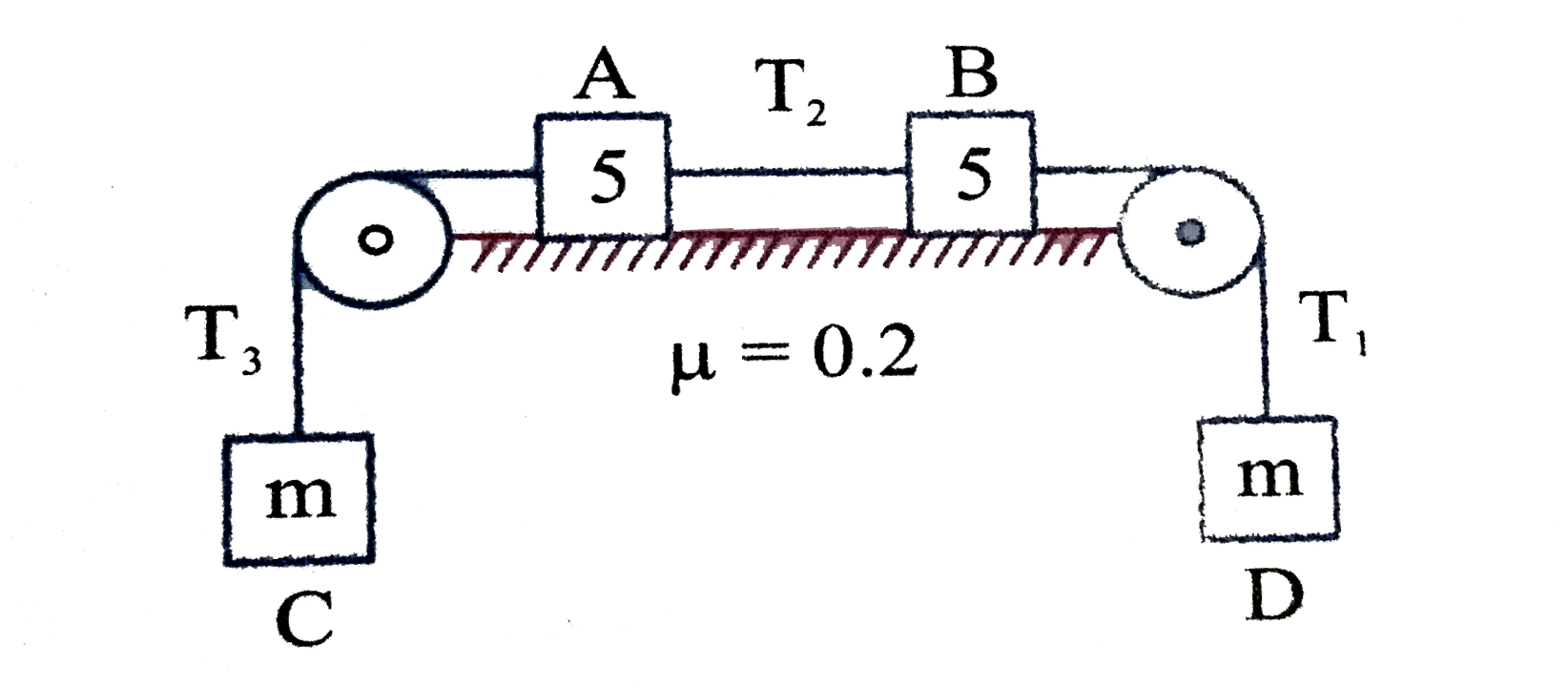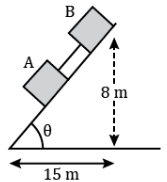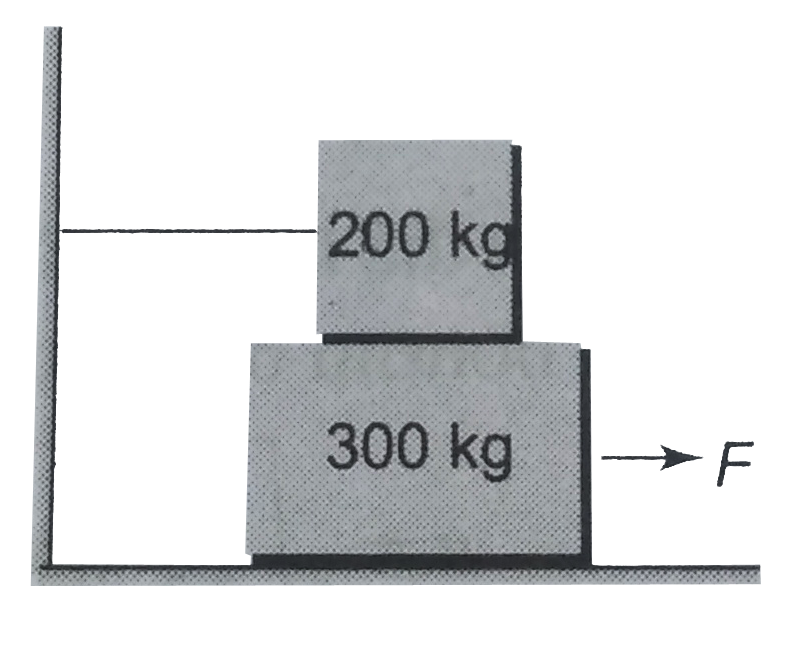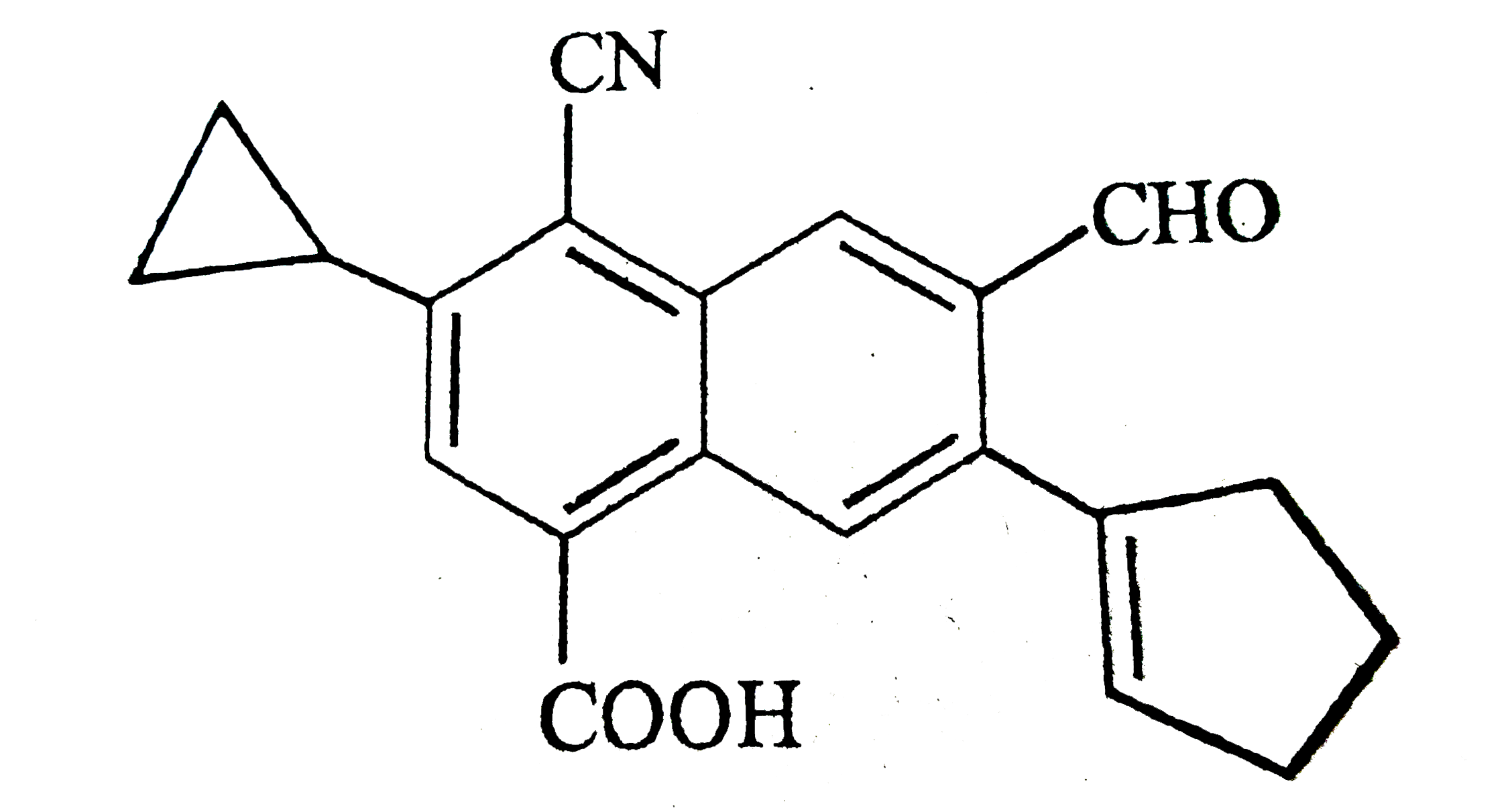In the shown figure, four blocks A,B,C and D are connected by three ideal strings. Coefficient of friction between A,B and surface is 0.2. The mass A,B and D are of 5kg and C is of mkg.fA and fB are the frictional forces action on A and B respectively. The system is allowed to move. Based on the above data answer
the following questions. ( Take g=10m/s2)

If m=5kg, then
T2=50N,fA=fB=10N
T2=40N,fA=fB=10N
T2=50N,fA=fB=0
T2=40N,fA=fB=0
The correct Answer is:C
Since in absence of friction no motion will occur. So no friction force will act on any mass.
Topper's Solved these Questions
Similar Questions
Block B is placed on a smooth surface. Block A is placed on rough surface of bolck B with coefficient of friction 0.60. The mass of A and B are 2kg and 4kg respectively. Find the frictional force between A and B ( in N)
 View Solution
View SolutionBlock AandB shown in the figure are connected with a bar of negligible weight. AandB each has mass 170kg , the coefficient of friction between A and the plane is 0.2 and that between B and the plane is 0.4(g=10ms−2)

What is the total force of friction between the blocks and the plane?View Solution
Knowledge Check
- Question 1 - Select One
Two block A and B of mass 50kg and 300kg respectively are placed as shown in figure. Coefficient of friction between all surface is 12
Then (take g=10m/s)
 ATension in the string is 2000NBTension in the string is 3000NCAcceleration of block B is 5/3m/s2DAcceleration of block B is 10/3m/s2
ATension in the string is 2000NBTension in the string is 3000NCAcceleration of block B is 5/3m/s2DAcceleration of block B is 10/3m/s2 - Question 2 - Select One
Two blocks A and B of mass 10 kg and 20 kg respectively are placed as shown in figure .Coefficient of friction between all the surface is 0.2 (g=10m/s2) Then,
 ATension in the string is 306 NBTension in the sr=tring is 132 NCaccelerration of block B is 2.6m/s2Dasseleration of block B is 4.7m/s2
ATension in the string is 306 NBTension in the sr=tring is 132 NCaccelerration of block B is 2.6m/s2Dasseleration of block B is 4.7m/s2 - Question 3 - Select One
In the show arrangement mass of A=1 kg, mass of B= 2kg. Coefficient of friction between A and B =0.2

There is no friction between B and ground. The frictional force exerted by A on B equals.A2 NB3 NC4 ND5 N
Block AandB shown in the figure are connected with a bar of negligible weight. AandB each has mass 170kg , the coefficient of friction between A and the plane is 0.2 and that between B and the plane is 0.4(g=10ms−2)

What is the force acting on the connecting bar?View SolutionA block A of mass 2kg rests on another block B of mass 8kg which rests on a horizontal floor. The coefficient of friction between A and B is 0.2 while that between B and floor is 0.5.When a horizontal floor F of 25N is applied on the block B the force of friction between A and B is
View SolutionA block A of mass 200kg rest on a block B of mass 300kg. A is tied with a horizontal string to a wall. Coefficient of friction between A and Bis0.25 and that between B and floor is 0.2. The horizontal force F needed to move the block B is
 View Solution
View SolutionA block A of mass 2 kg rests on another block B of mass 8 kg which rests on a horizontal floor. The coefficient of friction between A and B is 0.2 while that between B and floor is 0.5. when a horizontal force of 25 N is applied on the block B. the force of friction between A and B is
View SolutionTwo blocks are connected by a string and pulled by a force F=50N. If the coefficient of friction between the blocks and the ground is 0.2, friction force between the block B and the ground is :
 View Solution
View Solution
